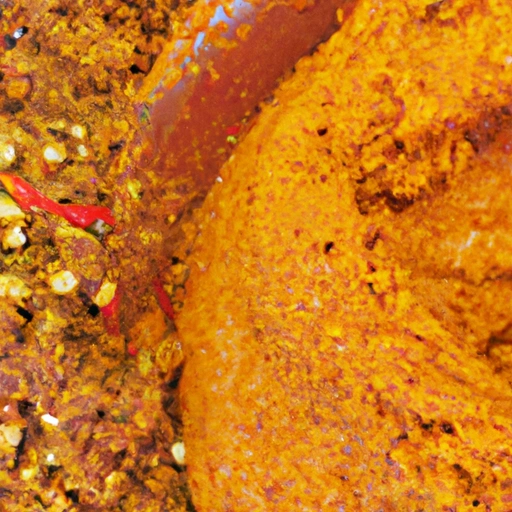Red Curry
Description

Red curry is a vibrant and tantalizing blend of spices and flavors that is a staple in Thai cuisine. This rich paste is typically made from a combination of red chilies, garlic, lemongrass, galangal, kaffir lime leaves, coriander, cumin, and sometimes shrimp paste. Often used as a base for curries, it imparts a spicy heat and depth of flavor to dishes. Available in both paste and powder forms, red curry can be found in Asian markets and many mainstream grocery stores.
Common uses
Red curry is commonly used to create rich and hearty curry dishes often combined with coconut milk, meats such as chicken, beef or pork, seafood, tofu, and a variety of vegetables. It also serves as a flavor enhancer in soups, marinades, and stir-fries, adding a distinctive spicy kick and red hue to recipes.
Nutritional value
Calories
Typically, red curry paste contains approximately 100 calories per 2-tablespoon serving (about 30 grams).
Protein
Red curry provides about 2 grams of protein per serving, making it a minor source of protein in a dish.
Fat
The fat content in red curry can vary, but it generally contains around 3 grams of fat per serving, some of which may be saturated depending on the ingredients used.
Carbohydrates
A 2-tablespoon serving of red curry paste contains about 7 grams of carbohydrates, primarily from the spices and aromatics.
Vitamins
Red curry includes vitamins such as Vitamin A from red chilies and Vitamin C from ingredients like lemongrass and lime leaves.
Minerals
It also provides a small amount of minerals like iron and calcium.
Health benefits
Red curry contains capsaicin from the red chilies, which is known for its anti-inflammatory properties and ability to boost metabolism. The blend of spices in red curry can also aid digestion and provide antioxidants.
Potential risks
For those sensitive to spicy foods, red curry may cause digestive discomfort. Additionally, it may contain shrimp paste, which is a potential allergen for those with shellfish allergies. Overconsumption could lead to increased sodium intake, which should be monitored.
Common recipes
Red curry is often used in recipes like Thai red curry with chicken, red curry beef stew, and vegetarian curries with tofu and vegetables.
Cooking methods
The paste is typically sautéed to release its flavors before combining with coconut milk, proteins, and vegetables to simmer, allowing the flavors to meld together.
Pairing with other ingredients
Red curry pairs well with jasmine rice or rice noodles, which balance its heat and complement its rich flavors. It also works well with a cooling side like cucumber salad.
Summary
Red curry is a quintessential Thai ingredient known for its bold flavors and versatility in the kitchen. It is used to create a variety of dishes that are both flavorful and aromatic. While it provides some nutritional benefits, it should be consumed in moderation due to its potential risks for those with food sensitivities or dietary restrictions.